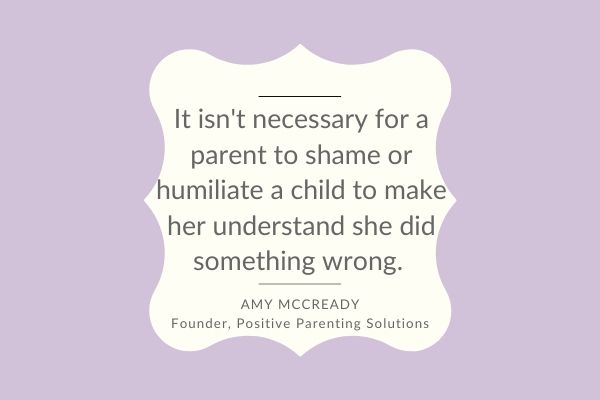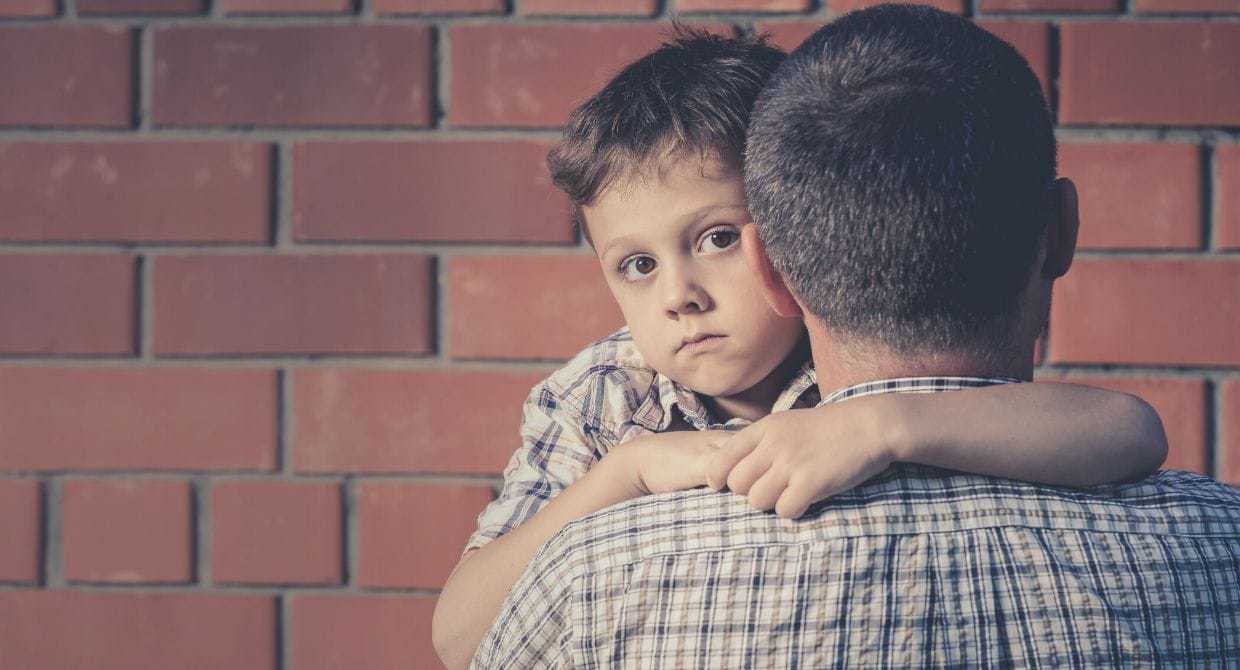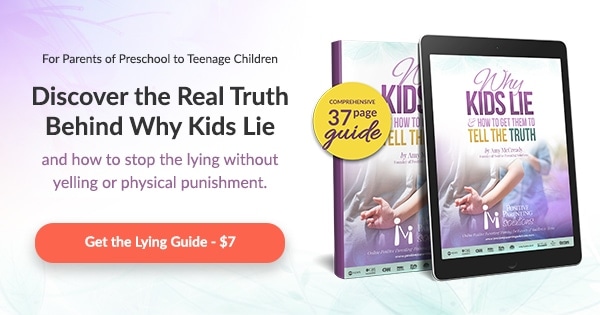

A few generations ago, if you acted out in class, you could have been met with a paddle or yardstick to the bottom–and possibly gone home with bruises. But it wouldn’t have stopped there. It’s likely another painful spanking would have awaited you at home.
Thankfully, today’s standards are more child-friendly. Many parents are abandoning certain, if not all, forms of spanking. And school corporal punishment–though not yet banned in all 50 US states–is mostly frowned upon. Still, many teachers, parents, and caregivers remain certain that spanking is a reliable behavioral remedy for unruly kids.
If spanking falls under the umbrella of corporal punishment, and corporal punishment is still legal in some schools, it might be logical to think that a certain degree of spanking–especially in the privacy of our own homes–is harmless.
After all, the spectrum of corporal punishment is wide. A light spanking or flick of the hand can cause far less damage than an angry strike with a stick–and the short and long-term side effects of a simple swat could be minor, some might think.
Spanking remains controversial because it’s a difficult subject to study. Researchers don’t have an exact way to differentiate between a family’s use of more severe corporal punishment and basic spanking. The causes and effects of spanking are also incredibly subjective.
“Some research suggests that the effects of spanking differ depending on the reasons parents spank, how frequently they do so and how old children are at the time–so the conclusion from the meta-analysis that spanking itself is dangerous may be overly simplistic.”
We don’t want parents to feel overly guilt-ridden for spanking when they did so with the best of intentions–helping their children learn.
And we certainly don’t want to lump parents who use spanking into the same category as those who use more severe forms of corporal punishment or even resort to child abuse.
However, evidence still suggests that spanking has negative effects.
In the same way that doctors don’t encourage alcohol consumption during pregnancy, psychologists certainly don’t recommend the use of spanking. Why take a chance, especially if there are plenty of potential risks and zero proven benefits?
The Risks of Spanking
Continued–and Encouraged–Misbehavior
It’s important to know that spanking of any degree can escalate a child’s behavior. It makes many kids obstinate and motivated to fight back. What’s worse, a child that’s misunderstood and discouraged long enough can begin exhibiting revenge-type misbehaviors.
Let’s say a 4-year-old is spanked for drawing on the walls. He’s now mad because either he doesn’t know he wasn’t supposed to draw on the walls, or he really doesn’t understand why he can’t draw on the walls. After all, the walls are just standing there, all clean and white–aren’t they just begging for color?
He tries again the next day to draw his masterpiece because he figures yesterday’s spanking was a fluke. Besides, he really wants to use his new crayons, and as a 4-year-old, his ability to control his impulses is limited at best.
But, he gets spanked again.
Now he’s fuming. He turns his anger–which he isn’t sure how to contain–towards his parent. This, in turn, inspires him to draw on the walls of the entire house; just to show how displeased he is.
Naturally, this further escalates his parent’s response and everything gets blown way out of proportion. What was originally a spanking intended to make him stop coloring on the walls–evolved into another spanking and a lot more anger and frustration.
And what could possibly be next? Hopefully not another, even more aggressive spanking.
Lying
Children who are spanked also tend to lie.
Think about it. To a child, it makes sense to lie to a parent to dodge a painful or embarrassing consequence or avoid a parent’s disappointment. A little white lie–or even a big one–seems like the easier choice.
We all want kids who tell the truth. But spanking undermines their motivation to come clean. If kids think they may be spanked for making a bad choice, why would they ever want to approach us with the truth?
What if there’s something we need to know, like that our 4-year-old was jumping–uninvited–on the neighbor’s trampoline when she fell and broke her wrist? If she wasn’t supposed to be on the trampoline in the first place (especially without zipping the safety net closed and without adult supervision) and she’s accustomed to being spanked for not following instructions, she’s likely to hide the true cause of her injury.
These omissions may not seem like a huge deal when kids are younger, but how will these situations play out when kids are older and the stakes are a lot higher?
Lying and spanking can become a vicious cycle. Lying can further motivate a parent to use spanking as a consequence, can undermine parent-child trust, and, ultimately, can damage the parent-child relationship by making children feel unworthy of our love. It’s best to choose a discipline strategy that doesn’t pose this risk.
Aggression/Hitting
The Oxford Learner’s Dictionary’s definition of spanking is “a series of hits on the bottom, given to somebody, especially a child, as a punishment.”
A little “hit” on a child’s bottom may not be a life-changer and likely won’t instill life-long psychological trauma. Still, we want any discipline we use to be effective long-term–and we certainly don’t want it to be harmful.
While we may be applying the Pavlov’s dog conditioning technique when we spank our children (through an attempt to make them stop their actions in fear of pain), the idea of teaching this through hitting is–at best–hypocritical.
We certainly don’t want our children hitting us, or anyone else. Most parents would be appalled to get a call from school saying their son or daughter had been hitting kids on the playground. But from a child’s perspective, there’s no difference between being spanked and hitting a friend for taking away a toy.
Despite even the best intentions, spanking teaches that hitting and aggression are appropriate ways to resolve conflict and vent frustration. So studies understandably show that children hit through spanking are prone to aggression.
If a spanked child is showing aggression, it’s time to consider spanking’s harmful side effects.
Cognitive Effects
Spanking our children may also result in negative cognitive effects.
A 2009 study from the University of New Hampshire said that children who were spanked had lower IQs than those who weren’t.
Lasting cognitive effects on young, developing brains isn’t hard to imagine. After all, “…children who spend more time responding to conflicts…spend more time thinking with their primitive brain (which is mostly autonomous) than their cerebral brain, (which is mostly wired for logic).” Subsequently, “…they perform more poorly on cognitive tests designed to measure a child’s competency in using logic.” Ugo Uche, Psychology Today
A similar decade-old study from Duke University also concluded that children who were spanked had lower scores on tests that measured thinking when they were 3. The study went on to say “when parents use physical discipline through childhood, their children experience more behavior problems in adolescence.”
While advocates of spanking usually insist there is a difference between spanking and abuse, it’s important to note these studies did look solely at spanking and not other forms of corporal abuse.
Adding Insult to Injury: Additional Effects of Spanking
It’s still likely that spanking with an object–like a stick or a belt–is going to be the most physically and mentally harmful to a child. But once again, what about a light spanking? Do we really need to worry about long-term side effects?
It doesn’t just matter how hard–or not–parents hit, or what tool may or may not be used.
It can also be the intention behind spanking that’s a big problem.
Shame-Inducing
Shame is arguably one of the most uncomfortable feelings humans experience. It makes us want to hide in a corner, disappear, and pretend the situation never happened.
It may seem like spanking a child with the intent of embarrassing and shaming her for her actions is teaching a good, memorable lesson. To some extent, embarrassment is just a part of life and a normal feeling to experience now and again.
However, it isn’t necessary for a parent to shame or humiliate a child to make her understand she did something wrong.

There are other much more effective ways to discipline our children that won’t lead them to believe they’re “bad kids” or make them feel unnecessarily shamed.
Public spanking is additionally humiliating for a child. Even though we often want to address misbehavior immediately and in the heat of the moment, it’s better to remove a child from public before dealing with the misbehavior. (This also gives both of you time to cool down and allows you to figure out what would be most helpful to your child.)
Instead of spanking a four-year-old–in front of her friends and other parents–for opening her friend’s present at her friend’s birthday party, we should calmly take her outside and explain what she did wrong. It’s completely shameless–and much more effective.
Blameful
It’s certainly easy to blame our children for their misbehavior. After all, they’re the ones that came up with the bad ideas and executed them. It’s quite literally their fault.
Even if it is their fault, there’s always a reason behind misbehavior. And blaming and spanking our kids won’t combat it.
Imagine your daughter screaming at her little brother. You enter the room just as she pushes him over. You immediately spank your daughter and blame her for bullying her brother. After all, she’s older and should know better.
What you may not have seen was your son pulling your daughter’s hair three times before she’d had enough.
We aren’t always there to witness what may have happened to cause misbehavior. Therefore, laying blame isn’t exactly fair. We also never know, without a doubt, what’s going through our kids’ minds. Even if a behavior is clearly unjustified, our kids are still learning how to manage their actions and emotions.
We don’t want our kids to feel less worthy or less capable after misbehaving by inflicting blame. It just damages their self-confidence. Instead, we need kids to know that it’s not only okay–and normal–to make mistakes, but that those mistakes also help them make better choices in the future.
This certainly doesn’t mean we should never apply consequences to misbehavior. Nor should we avoid teaching our kids self-reflection and humility.

But, instead of spanking your daughter and saying “What’s wrong with you?! You need to set a better example for your brother!” avoid spanking her and say, “I know you love your brother, and everybody makes mistakes sometimes. So let’s talk about what we can do differently next time.”
The thought of using a statement like this with a kid whose behavior is getting worse may not seem firm enough. But I’d like to emphasize that the kids who need encouragement the MOST get it the LEAST. This means the kid who always causes trouble and seems SO bad and is SO easy to blame–doesn’t need to be berated or spanked. Instead, he needs to be helped through positive parenting–and quickly.
Angry/Threatening
To our children, we are big, knowledgeable, intimidating, and–to our younger ones especially–we are their world. As their guides, they rely heavily, and for a while even solely, on us.
Because we have so much power, we can also–if we’re angry–be terrifying. Children are vulnerable, easily influenced, and prone to fear.
When spanking comes from a place of anger, or even reaches the point of sounding threatening, our children are justifiably scared. We are stronger than them–a giant to them–and they feel powerless.
Nothing can make a child feel further defeated than fear. And although we may want to “win” battles with our children over misbehavior, to do so in a way that makes them afraid, unsettled, and unstable? Now that can produce life-long psychological effects.
The Harmful Effects Spanking Can Have on US
Unfortunately, the use of spanking can backfire and harm us just as much as our kids.
Anything that adversely affects our children will adversely affect us. We want them to be happy. We want them to be healthy. We love them unconditionally.
We also have the added responsibility of taking care of and parenting our kids in the best manner possible. So when our spanking causes them harm (or is ineffective at best), we’re left to pick up the pieces.
Added Frustration
Nothing is worse than inflicting pain on our beloved children to no avail. When we spank our kids and don’t see any results, we are rightfully fed up with them and the situation.
Maybe we spank our kids and DO see some immediate results. But a few weeks later, the same misbehavior likely returns. The frustration from a lesson unlearned just adds to our parenting woes.
Continued frustration can wear us all down, my friend. We need to be intentional about the discipline strategies we choose and make sure they aren’t adding unnecessary stress.
Remorse
Maybe we’ve spanked our children on occasion and haven’t felt an ounce of guilt. But when spanking increases misbehavior and decreases positive results, it’s also natural to question if spanking was the right choice.
Guilt harms our confidence as parents and adds more unpleasantness to the emotional roller coaster we’re riding.
My advice for you is to choose a discipline strategy that is not only positive and without harm, but EFFECTIVE. Our children will still learn tough lessons from positive parenting techniques, but it will be in a way that doesn’t risk harming your child physically or emotionally. Nor will it leave you questioning your choices.
Final Thoughts
I’d like to share a quote with you from Astrid Lindgren, the author of Pippi Longstocking, that made a big impact on me when I first read it years ago:
Above all, I believe that there should never be any violence. In 1978, I received a peace prize in West Germany for my books, and I gave an acceptance speech that I called just that: “Never Violence.” And in that speech I told a story from my own experience.
When I was about 20 years old, I met an old pastor’s wife who told me that when she was young and had her first child, she didn’t believe in striking children, although spanking kids with a switch pulled from a tree was standard punishment at the time. But one day, when her son was four or five, he did something that she felt warranted a spanking-the first in his life. She told him that he would have to go outside himself and find a switch for her to hit him with.
The boy was gone a long time. And when he came back in, he was crying. He said to her, “Mama, I couldn’t find a switch, but here’s a rock that you can throw at me.”
All of a sudden the mother understood how the situation felt from the child’s point of view: that if my mother wants to hurt me, then it makes no difference what she does it with; she might as well do it with a stone. And the mother took the boy into her lap and they both cried. Then she laid the rock on a shelf in the kitchen to remind herself forever: never violence. And that is something I think everyone should keep in mind. Because if violence begins in the nursery one can raise children into violence.
– By Astrid Lindgren, author of Pippi Longstocking. Originally shared by Vivian Brault, founder of Directions, Inc.
Although I understand many parents feel the need to spank their children, my years of work as a positive parenting educator have helped me conclude that spanking is neither effective nor harmless as a discipline strategy.
It doesn’t matter if it’s a light swat on the bottom or a painful strike with a belt. Spanking will always be a risky way to teach children to behave. And why would we want to take any more chances with our children’s futures than necessary?
So, please–I encourage you to take the first steps towards positive discipline today.
And remember–never violence.
Not sure what to do instead of spanking? JOIN ME FOR A FREE CLASS. You’ll not only learn how to implement fair, effective, and non-physical consequences for your children; you’ll start shedding remorse and frustration over the methods that have failed to work.
We are here for you on this wildly wonderful road of parenthood!
Title Image: altanaka / Shutterstock www.shutterstock.com/photos







